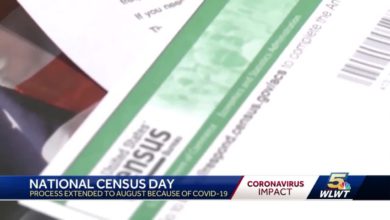
How protected is the Cincinnati region by COVID-19 vaccines? Nearly one of every two residents has gotten the jab. But the region's vaccination rate actually has fallen slightly in the last month due to counting errors.
The revision came as people were moving inside on the approach of winter, when the "herd protection" of inoculation against the novel coronavirus is needed most.
Depending on the location in Kentucky, the effects of the miscount were noticeable. In Campbell County, the revision dropped the vaccinated population by 10 percentage points from early October to early November.
The Kentucky revisions dropped the vaccination rate for the 16-county Cincinnati region 0.6 points to 46.7%, an Enquirer analysis of Centers for Disease Control and Prevention data shows.
Gov. Andy Beshear said at an Oct. 28 news conference that the miscount occurred when the federal government double-counted some immunizations at Kroger pharmacies. Fixing the error dropped the commonwealth's rate of COVID-19 vaccinations about 6 percentage points.
Kentucky now has about 56% to 57% percent of its residents with at least the first dose of vaccine instead of the 62% once reported on the state public health website.
The correction meant vaccination rates among various age groups in some counties would likely be adjusted downward as well, Beshear said. And that's exactly what happened in the Cincinnati region.
Where things stand now
The errors in the Kentucky vaccination numbers were found before COVID-19 infections began yet another rise in the Cincinnati region, in Ohio and possibly in Kentucky.
The county with the highest vaccination rate in the Enquirer analysis was tiny Ohio County in southeast Indiana. The county is at 69.9% of its nearly 6,000 residents with at least one dose. That level is approaching the 80% goal for adult vaccinations that local health, civic and business leaders set in April with a deadline of July 4.
The region's most populous counties, including Dearborn County, Indiana, now have more than half their residents inoculated. Northern Kentucky counties saw vaccination rates drop from the error with the Kroger injections.

How Kentucky found the error
Beshear said state officials discovered in mid-October that some Kroger numbers reported to the federal government and to the state had been inadvertently duplicated.
"This was not intentional by anybody," Beshear said. "Kroger's been a great partner with us in testing and vaccinations and we do not blame anyone for this."
A Kroger spokeswoman said the duplication appeared to have occurred in the way the U.S. Centers for Disease Control and Prevention collects data reported by Kroger as a federal retail pharmacy partner, and separately to the Kentucky Immunization Registry, as a state-level pharmacy partner.
"The issue creating this duplication has been resolved and will not recur following this one-time adjustment to the reporting," spokeswoman Erin Grant said.
Courier Journal reporter Deborah Yetter contributed.
Source link







